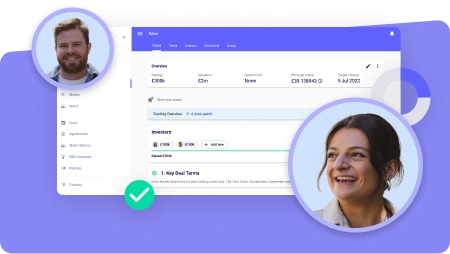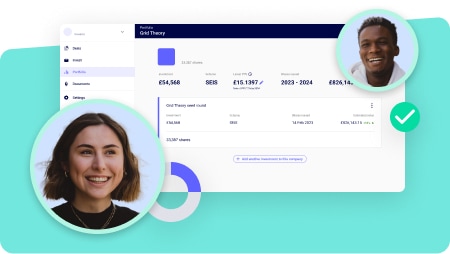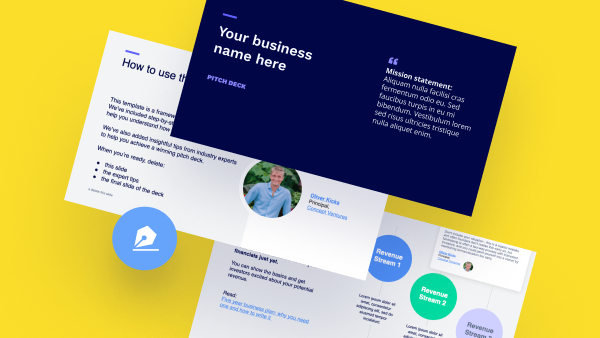Instant Investment
Add investment, anytime
Use Instant Investment to top up a previous round and add new investors anytime.
Top up between funding rounds
Raise easily between rounds
Add investors in a few clicks
Share and sign online
Raise small amounts

Deed of Adherence
Say hello to agile funding
No need to wait until you do a funding round - add investments whenever you need to.
More freedom - fundraise your way
More flexibility - seize opportunities as they arise
More time - stay focused on growing your business
Unlimited help with Instant Investment
Talk to the experts
Not sure how it works? Wondering how much equity to give away? We've helped thousands of companies fundraise - talk to our experts to get answers, fast.
Talk to us via live chat, phone, email or video call
Unlimited help included for members - no billable hours
Ask us anything - we're here 9am to 6pm Monday to Friday
How to raise funding with Instant Investment
Success stories utilising Instant Investment
FAQs- Instant Investment
How much can I raise with Instant Investment?
You can raise any amount between £5,000 and £10 million.Can I use Instant Investment if I haven’t done a funding round on SeedLegals before?
Yes, you can. Instant Investment is designed as a quick and easy way to top up a funding round - but if you’ve completed a funding round elsewhere or even if you’ve never done a funding round before, you can still use Instant Investment to raise startup funding. We have all the documents you need to close the deal and assign shares on SeedLegals.
If you’re interested in doing a funding round you can use SeedLegals for that too. You can use any of our services together with Instant Investment.How do I do an Instant Investment?
- Log into SeedLegals
- Go to Raise and select Instant Investment
- Fill in the details of the investor and the amount
- Generate your documents
- Send the documents via SeedLegals for the investor to sign
- Investor signs and then transfers the money directly to you
- You receive the funds 🚀
Read more: How to do an Instant Investment: step-by-step guideWhat documents do I need for an Instant Investment?
On SeedLegals, these are the documents you need to complete each Instant Investment:- Instant Investment Proposal
- Instant Investment Agreement
- Board Resolution
- SH01 Form
The documents are generated and auto-filled for you.Should I do a SeedNOTE/SeedFAST or an Instant Investment?
SeedFAST/NOTE is designed for fundraising before a round.
You can do a SeedNOTE or SeedFAST when you want to take investment without doing a valuation. SeedFASTs and SeedNOTEs are future equity agreements that allow you to take investment now and issue shares or repay the money at a future date based on the valuation at that time.
Read more: Agile fundraising: introducing SeedFAST and SeedNOTE
Instant Investment is designed for topping up a previous round.
You can do an Instant Investment when you already have an agreed-upon valuation and want to issue shares right away at the agreed-upon price per share.
When you do a funding round on SeedLegals, you can enable Instant Investment in the round. This makes it easy for you to top up afterwards because you’ve sorted out all the necessary permissions already.How many investments can I receive with Instant Investment?
There is no limit on how many investments you can receive as Instant Investment. You can use it as many times as you like for any number of investors. Each investment amount must be between £5,000 and £10M.
Keep in mind that you pay per investment. We charge 1% of the investment amount, for each Instant Investment made.What does a ‘rolling close’ mean?
A rolling close means that you’re still accepting investments after closing your most recent funding round.What is agile funding?
Agile funding is our way to describe raising startup capital without doing a funding round. Agile funding allows you to take investment as and when it suits you.
Nowadays startups need to raise capital in simpler ways that cost less time and money. We’re pioneering this change with agile funding services designed to help you take investments whenever the opportunity arises.
Read more: Agile fundraising with SeedFAST and Instant InvestmentI still have questions about Instant Investment…
Hit the chat button to message our friendly team - we’re always happy to help.
You’re in safe hands
Our team of legal and funding experts have helped thousands of entrepreneurs raise money and grow their businesses.
Beautifully organised
Your company's core agreements, all in one place
Secure signatures
Share and collect signatures online via SeedLegals
Backed by real lawyers
Create the exact documents you need at every stage of growth
Serious about security
Your information stays safe and confidential in our secure system
Helpful humans
Talk to one of our friendly team anytime on live chat
Extra protection
Don't worry, our insurance covers claims related to our platform
We’ve helped over 60,000 companies
From food to FinTech and beyond, join thousands of startups who use SeedLegals to start, raise and grow faster.
More customer stories






























